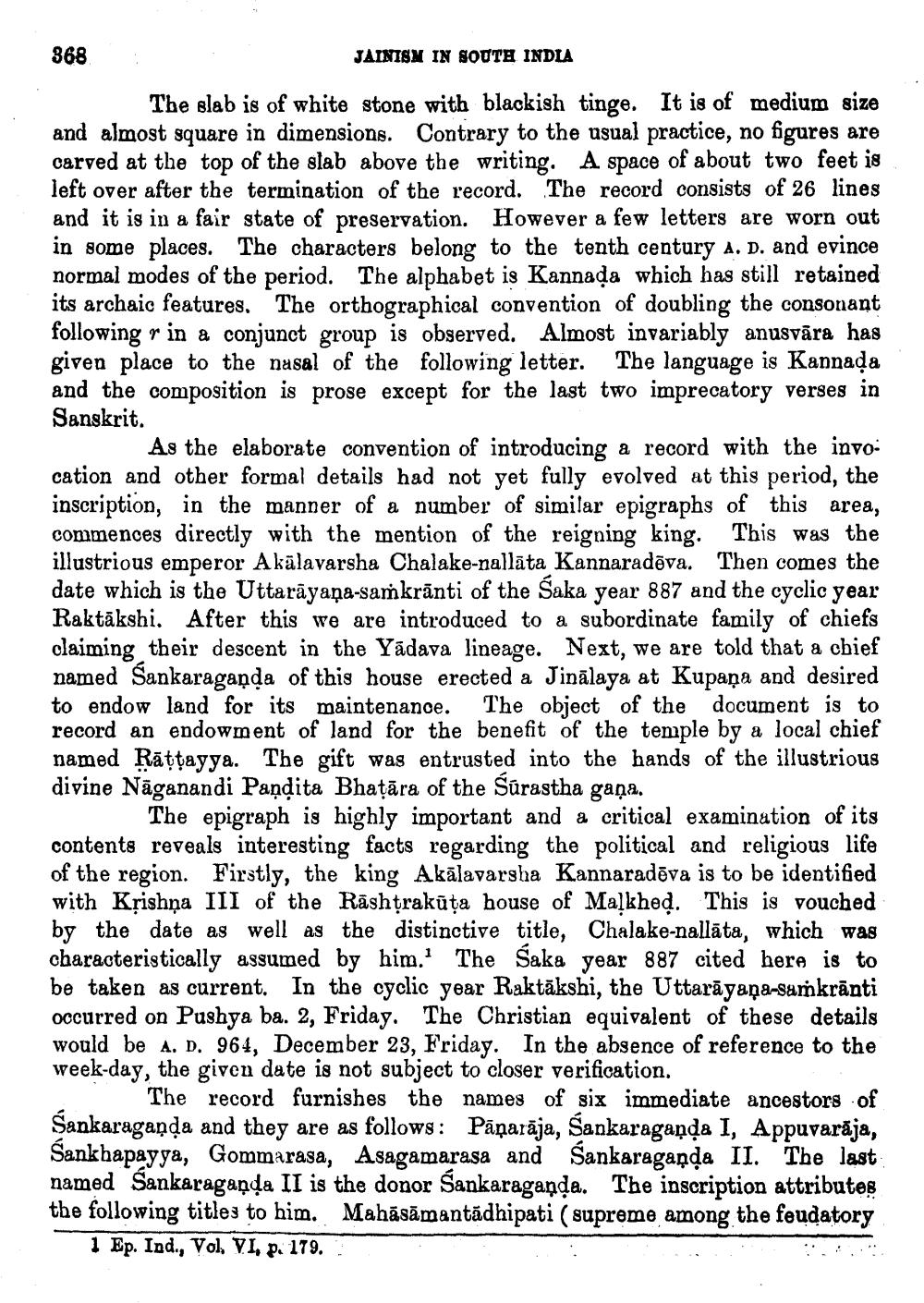________________
368
JAINISM IN SOUTH INDIA
The slab is of white stone with blackish tinge. It is of medium size and almost square in dimensions. Contrary to the usual practice, no figures are carved at the top of the slab above the writing. A space of about two feet is left over after the termination of the record. The record consists of 26 lines and it is in a fair state of preservation. However a few letters are worn out in some places. The characters belong to the tenth century A. D. and evince normal modes of the period. The alphabet is Kannada which has still retained its archaic features. The orthographical convention of doubling the consonant following r in a conjunct group is observed. Almost invariably anusvāra has given place to the nasal of the following letter. The language is Kannada and the composition is prose except for the last two imprecatory verses in Sanskrit.
As the elaborate convention of introducing a record with the invo: cation and other formal details had not yet fully evolved at this period, the inscription, in the manner of a number of similar epigraphs of this area, commences directly with the mention of the reigning king. This was the illustrious emperor Akālavarsha Chalake-nallāta Kannaradova. Then comes the date which is the Uttarāyaṇa-samkrānti of the Saka year 887 and the cyclic year Raktākshi. After this we are introduced to a subordinate family of chiefs claiming their descent in the Yadava lineage. Next, we are told that a chief named Sankaraganda of this house erected a Jinālaya at Kupaņa and desired to endow land for its maintenance. The object of the document is to record an endowment of land for the benefit of the temple by a local chief named Rattayya. The gift was entrusted into the hands of the illustrious divine Nāganandi Paņdita Bhatāra of the Súrastha gana.
The epigraph is highly important and a critical examination of its contents reveals interesting facts regarding the political and religious life of the region. Firstly, the king Akālavarsha Kannaradēva is to be identified with Krishņa III of the Rashtrakūta house of Maļkhed. This is vouched by the date as well as the distinctive title, Chalake-nallāta, which was characteristically assumed by him.' The Saka year 887 cited here is to be taken as current. In the cyclic year Raktākshi, the Uttarāyaṇa-samkrānti occurred on Pushya ba. 2, Friday. The Christian equivalent of these details would be a. D. 964, December 23, Friday. In the absence of reference to the week-day, the given date is not subject to closer verification.
The record furnishes the names of six immediate ancestors of Sankaraganda and they are as follows: Pāņarāja, Sankaraganda I, Appuvarāja, Sankhapayya, Gommarasa, Asagamarasa and Sankaraganda II. The last named Sankaraganda II is the donor Sankaraganda. The inscription attributes the following titles to him. Mahāsāmantādhipati ( supreme among the feudatory
1 Ep. Ind., Vol. VI. p. 179.




